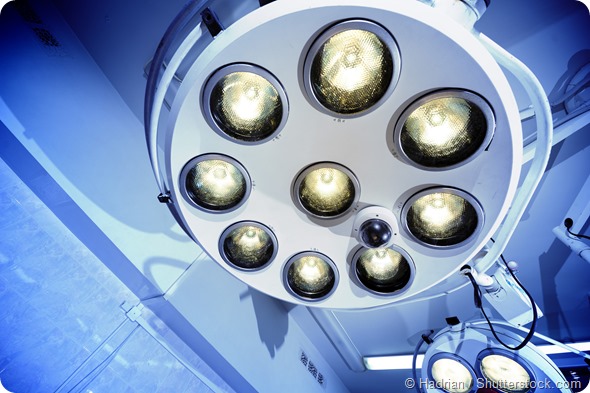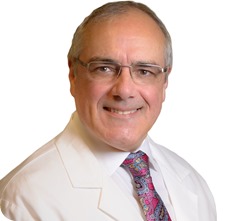When new technology becomes available, surgical or otherwise, there are those who adopt early, and those who hold on to previous familiar methods.
As a thoracic surgeon, it was not too long ago in our field that VATS (Video-Assisted Thoracoscopic Surgeries) began to replace open surgery as the cutting-edge surgical option.
Today, however, many surgeons are proposing robotic techniques as the next wave of technological advancement for patients in not only thoracic surgery, but many other surgical specialties.
Oftentimes, those who are willing to develop and implement new technologies can offer the patient surgical options which may produce superior outcomes.

Why is robotic surgery in high demand?
Robotic surgery is currently in high demand with many types of patients because it is representative of the newest, most innovative technique. No one wants to consider receiving last year’s best option when there are more advanced, and possibly more effective, alternatives available.
Incorporating new features has made robotic surgery an option for an even wider range of operation types.
What recent improvements have been seen in robotic technology?
As the robotic technology continues to improve, our capabilities become more advanced as well. Some recent improvements are as follows:
- Initial versions of the da Vinci Surgical System featured a camera which was placed through a single port. In the latest version of the da Vinci platform, the camera can be moved from one port to another in a technique called “port hopping.” This change in viewing approach may decrease the frequency of operations where the surgeon needs to convert from a planned minimally invasive procedure to an open traditional procedure.
- The current model of da Vinci robot enhances the precision with which surgical procedures can be performed with the development of vessel sealing and stapling technology. Firefly (laser) can also help assess viability of tissue in the operative field.
- With respect to thoracic robotic surgery, the precision of the instrumentation and the upgraded quality of visualization are enhancements that allow for a more complete lymph node dissection, which improves the accuracy of lung cancer staging. This is important when trying to determine whether additional adjuvant chemotherapy will be necessary.
How prevalent are robotic techniques?
Although the national number of procedures being performed robotically is small (for thoracic procedures the number is at approximately 10%), at Main Line Health in the western suburbs of Philadelphia, this technology is used frequently.
For example, we do over 90% of pulmonary resections robotically, due to our surgical teams’ commitment to developing their skills to a level where robotic procedures are a matter of routine.
The robot platform offers the surgeon a more sophisticated tool to accomplish the planned procedure, and can only perform as well as the surgeon using it.
How are robotic procedures studied for effectiveness?
When outcomes studies are performed on robotic procedures, it is often an aggregate study comparing large groups of surgeons. The drawback is that this compares the very best laparoscopic surgeons to doctors performing newer robotic surgeries, which dilutes results and success rates, and may not give a true representation of the impact of a robotic-assisted procedure on the patient's outcome.
At Main Line Health, we are conducting outcomes and comparative effectiveness studies that will contribute to a better understanding of the impact of robotic-assisted surgery on short-term and long-term outcomes.
For example, we have already been able to see short-term benefits to patients who have had robotic-assisted pulmonary resections. Our hypothesis is that we will see a long-term oncologic benefit as well.

What do you think the future holds for robotic surgery?
At Main Line Health we have made teaching innovative techniques to our medical students and surgeons-in-training a priority. It is our professional responsibility to shape the future of surgical intervention by providing the next generation of surgeons with detailed knowledge and experience about robotic surgery.
And as these younger, more innovative surgeons cycle into the field, older ways of thinking will be phased out. Of course, there will be cases where a laparoscopic procedure or open surgery may still be the best option for a patient; however it’s up to the surgeon and the patient to determine the most effective treatment plan, while always keeping patient outcomes in mind.
The best surgeons recognize that learning is a lifelong process, and we must remain open minded to adopting new techniques as technology advances. Like learning anything new, mastering robotics takes practice and patience. While it can be difficult to carve out the necessary time for training, it is critical for us to use our clinical experience to help the field to evolve in the name of the patients who depend on us.
Where can readers find more information?
For more information on the innovative techniques being used at MLH visit: http://www.mainlinehealth.org/thoracic
About Dr Patrick Ross
Dr. Patrick Ross is Chairman of Surgery at Main Line Health (MLH) in Philadelphia. Prior to MLH, Dr. Ross spent 24 years at The Ohio State University Wexner Medical Center in Columbus, OH, where he was Chief of Thoracic Surgery and Professor of Clinical Surgery.
In addition, Dr. Ross was Director of the Thoracic Surgery Service at the medical center’s Arthur G. James Cancer Hospital and Richard J. Solove Research Institute, where he served as Chief of Staff from 2009 to 2011. The James Hospital is a National Cancer Institute–designated cancer center and the third largest cancer hospital in the nation.
Dr. Ross earned his medical degree and a doctorate in physiology from Saint Louis University in St. Louis, MO. He completed a general surgery residency at Yale University School of Medicine and cardiothoracic surgery training at the Hospital of the University of Pennsylvania and The Children’s Hospital of Philadelphia.